#joan of arc at the coronation of charles vii
Text







George and John in Paris, 1964 | Joan of Arc, Peter Paul Rubens | The Joan of Arc Wikipedia page | The Ballad of John & Yoko | Fans showing support for John after the "Bigger Than Jesus" scandal | Joan of Arc at the Coronation of Charles VII, Ingres
#guess who's back on her bullshit :)#if youre wondering what it means: i dont know either#all i know is something something john of arc#the beatles#beatles#john lennon#george harrison#joan of arc#web weaving
185 notes
·
View notes
Text

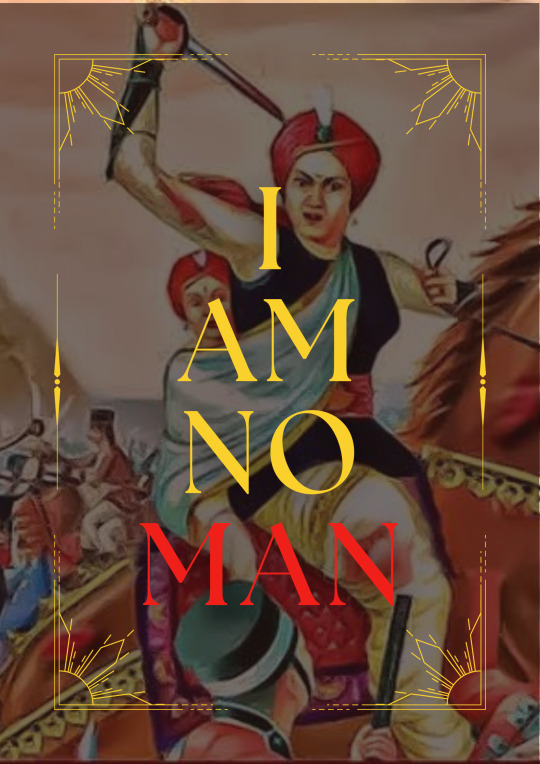
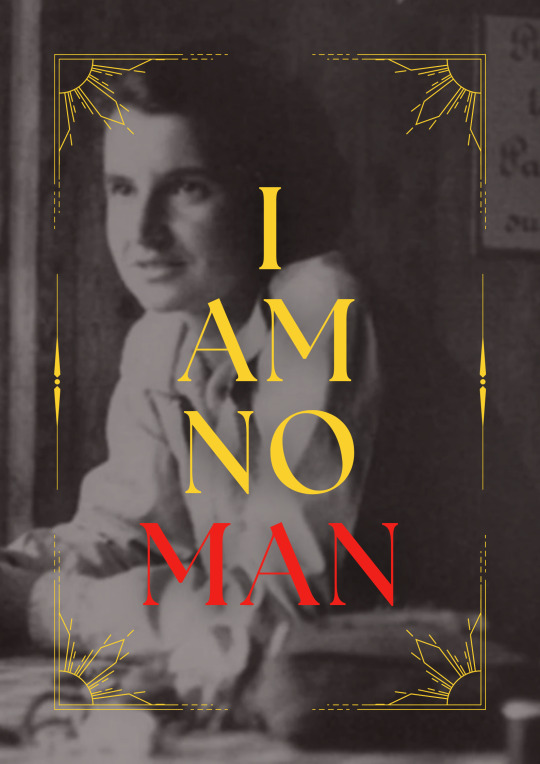





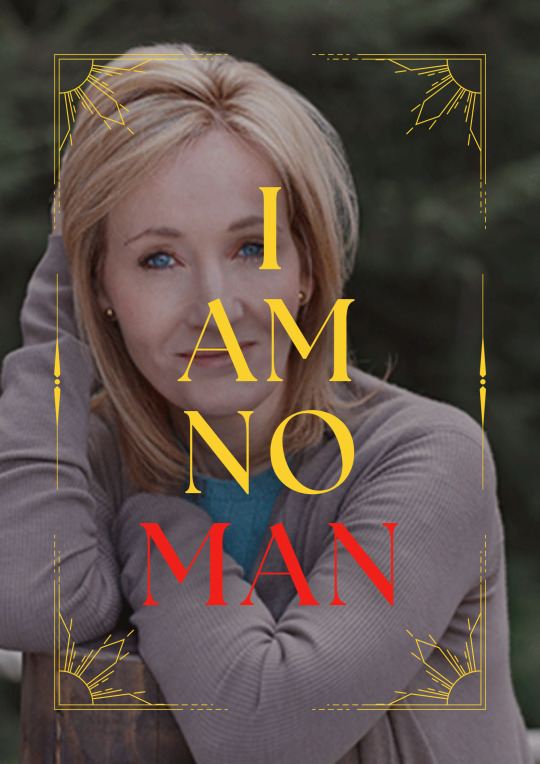
Throughout history, women have left an undeniable impact on society with their hard work, creativity, and dedication to progress. Unfortunately, their accomplishments have often gone unnoticed, been undervalued, or even stolen. Despite these challenges, brave women of today continue to push boundaries, break barriers, and pave the way for a more fair and equal world. It's our duty to keep going, so that future generations of women can inherit a kinder, more just, and supportive world. By following in the footsteps of the incredible women who came before us, we can create a world where every woman can flourish and succeed, and where their contributions are recognized and celebrated.
Joan of Arc is a patron saint of France, honored as a defender of the French nation for her role in the siege of Orléans and her insistence on the coronation of Charles VII of France during the Hundred Years' War. Claiming to be acting under divine guidance, she became a military leader who transcended gender roles and gained recognition as a savior of France. She was put on trial by Bishop Pierre Cauchon on accusations of heresy, which included blaspheming by wearing men's clothes, acting upon visions that were demonic, and refusing to submit her words and deeds to the judgment of the church. She was declared guilty and burned at the stake on 30 May 1431, aged about nineteen.
Rani Lakshmibai was the Maharani consort of the princely state of Jhansi from 1843 to 1853. She was one of the leading figures in the Indian Rebellion of 1857 became a symbol of resistance to the British rule in India for Indian nationalists. When the Maharaja died in 1853, the British East India Company under Governor-General Lord Dalhousie refused to recognize the claim of his adpoted heir and annexed Jhansi under the Doctrine of Lapse. She rode into battle with her infant son strapped to her back, and died in June 1858 after being mortally wounded during the British counterattack at Gwalior.
Rosalind Franklin was a British chemist and X-ray crystallographer whose work was instrumental in the discovery of the structure of DNA. Her contributions were largely overlooked by her male colleagues, James Watson and Francis Crick, who used her data without her permission or acknowledgement. This theft of her intellectual property and erasure of her contributions is a prime example of the systemic sexism that has historically plagued the scientific community.
Hedy Lamarr was an Austrian-American actress and inventor who co-invented a frequency-hopping spread spectrum technology during World War II that was used to guide torpedoes. However, her contributions were largely ignored and dismissed by male engineers and the military at the time. It was only later in life that she received recognition for her scientific achievements.
Emma Weyant is an American competitive swimmer. She was the US national champion at the individual medley. She qualified for the 2020 Olympic Games in the 400m individual medley and won the silver medal in this event. Weyant finished second in the 500-yard freestyle at the 2022 NCAA Division I Women's Swimming and Diving Championships. She was beaten by William (Lia) Thomas, a fetishist, who when competing as a member of the Penn men's team, which was 2018-19, ranked 554th in the 200 freestyle, 65th in the 500 freestyle and 32nd in the 1650 freestyle. Weyant is the fastest swimmer in the 500-yard freestyle and had her position stolen by a man.
Maryna Viazovska is a Ukrainian mathematician who made a breakthrough in sphere packing, solving the centuries-old mathematical problem known as the densest packing of spheres in dimensions 8 and 24. She was awarded the Fields Medal in July 2022, making her the second woman (after Maryam Mirzakhani), the second person born in the Ukrainian SSR and the first with a degree from a Ukrainian university to ever receive it.
Hannie Schaft was a Dutch resistance fighter during World War II who played a crucial role in the resistance movement against Nazi occupation. Schaft was a former university student who dropped out because she refused to sign a pledge of loyalty to Germany. Nazis arrested and killed her in 1945, just three weeks before the war ended in Europe. According to lore, Schaft’s last words were, “I’m a better shot,” after initially only being wounded by her executioner.
Shakuntala Devi was an Indian mathematician and mental calculator who was known as the "Human Computer" for her exceptional ability to perform complex mathematical calculations in her head. Her extraordinary abilities earned her a place in the 1982 Guinness Book of Records. Her lesser known achievement is that in 1977 she wrote what is considered to be the first book in India on homosexuality titled “The World of Homosexuals.”
J. K. Rowling is a British author and philanthropist. She wrote Harry Potter, a seven-volume children's fantasy series published from 1997 to 2007. Known for her philanthropy, she was doxxed and harassed after coming out with support for women's and gay rights in 2020. Rowling secretly donated hundreds of thousands of pounds to save 100 female lawyers and their families facing murder in Afghanistan. In 2022, she funded a women's only rape shelter in Edinburgh.
#this post was inspired by me being absolutely sick of trans activists claiming that joan of arc/rani lakshmibai/insert literally any other#strong woman#is actually a trans man#they were no man at all#women have been brave and strong and amazing throughout history#and they still are#if only you'd get your head out of your ass to take a look#radical feminism#radblr#terf#trans#misogny#i am no man
679 notes
·
View notes
Text
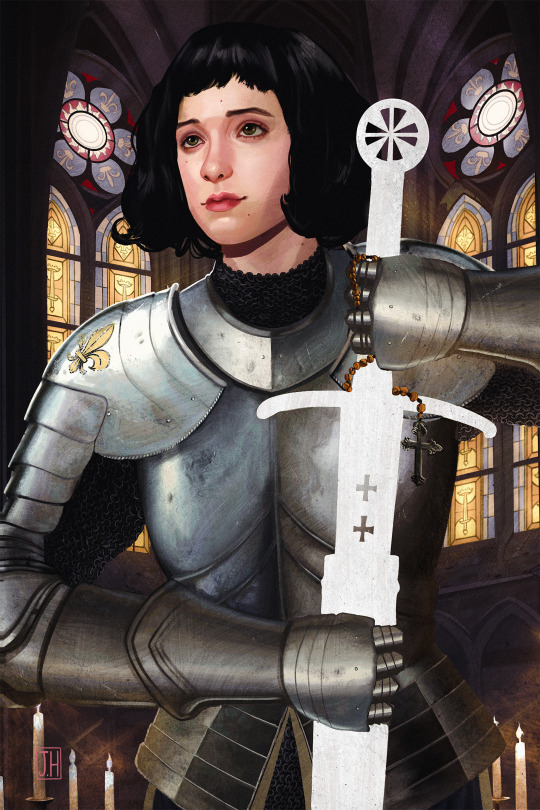
Joan of Arc the Maid of Orléans by Harprdraws
"Joan of Arc is a patron saint of France, honored as a defender of the French nation for her role in the siege of Orléans and her insistence on the coronation of Charles VII of France during the Hundred Years' War."
#joan of arc#jeanne d'arc#digital illustration#historical art#women in armor#character design#character art#holy art#religious art
162 notes
·
View notes
Text



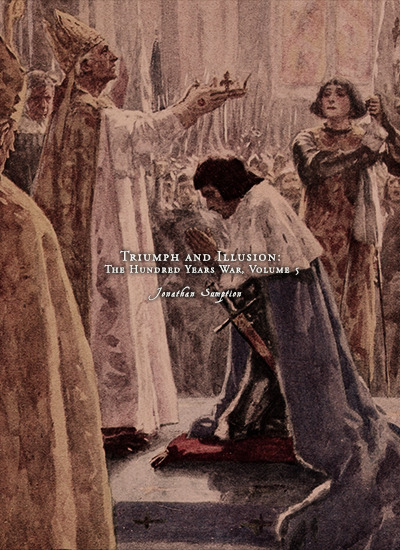
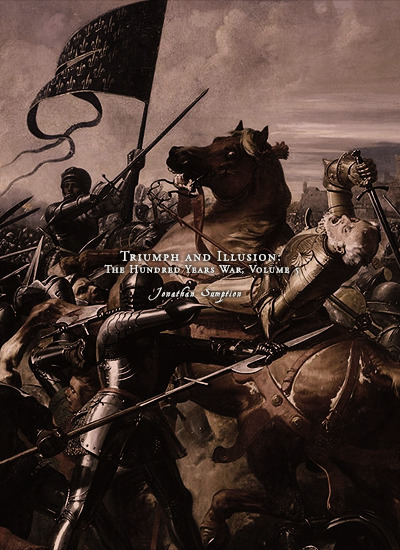
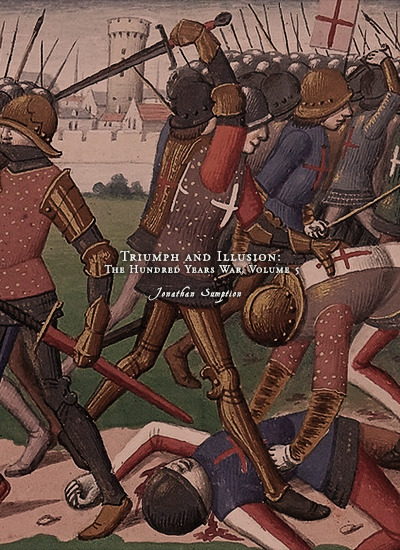
Favorite History Books || Triumph and Illusion: The Hundred Years War Volume 5 by Jonathan Sumption ★★★★☆
The wheel of fortune is one of the most ancient symbols of mankind, an image of capricious fate and the transience of human affairs. In the late middle ages it was everywhere, in illuminated manuscripts, in wall paintings and stained glass, in sermons and homilies, in poetry and prose. ‘The wheel of fortune turneth as a ball, sudden climbing axeth a sudden fall,’ wrote John Lydgate in The Fall of Princes, a work commissioned by one of the dominant figures in this history, Cardinal Henry Beaufort. The present volume traces the remarkable recovery of France in barely two decades from the lowest point of its fortunes to the dominant position in Europe which it had enjoyed before the wars with England. Sudden climbing axeth a sudden fall. These years saw the collapse of the English dream of conquest in France from the opening years of the reign of Henry VI, when the battles of Cravant and Verneuil consolidated their control of most of northern France, until the loss of all their continental dominions except Calais. This sudden reversal of fortune, inexplicable to many contemporary Englishmen, was a seminal event in the history of the two principal nation-states of western Europe. It brought an end to four centuries of the English dynasty’s presence in France, separating two countries whose fortunes had once been closely intertwined. It created a new sense of identity in both of them. In large measure, the divergent fortunes of the French and English states over the following centuries flowed from these events.
The passions generated by ancient wars eventually fade, but those provoked by the wars of the English in fifteenth-century France have proved to be surprisingly durable. The foundations of scholarship on the period were laid by patriotic French historians of the nineteenth century, writing under the shadow of Waterloo and Sedan. The passage of the centuries did nothing nothing to soften their indignation about the fate of their country in the time of Henry VI and the Duke of Bedford. The extraordinary life and death of Joan of Arc defied historical objectivity until quite recently. Joan’s story became the focus of disparate but powerful political passions: nationalism, Catholicism, royalism and intermittent anglophobia. Much of what has been written falsifies history by attributing to medieval men and women the notions of another age. But myths are powerful agents of national identity. The great French historian Marc Bloch once wrote that no Frenchman could truly understand his country’s history unless he thrilled at the story of Charles VII’s coronation at Reims. Writing in the summer of 1940 in the aftermath of a terrible defeat, Bloch looked to an earlier recovery from the edge of disaster for reassurance about the survival of France.
If there is a corresponding English myth, it is in the history plays of Shakespeare. The great speeches which he gave to John of Gaunt and Henry V belong to the classic canon of English patriotism. His three plays about Henry VI, a truncated story of discord at home and defeat abroad, never reach the same heights. Yet they serve to remind us that behind the clash of arms and principles were men and women of flesh and blood. I have tried at every page to remember that they were not cardboard cut-outs. They endured hunger, saddle-sores and toothache. They experienced fear and elation, joy and disappointment, shame and pride, ambition and exhaustion. At the level of government, they were trapped by the logic of war, lacking the resources to conquer or even to defend what they had, and yet unable to make peace. It was the tragedy of the English that, after an initial surge of optimism in the 1420s, they realised that the war could not be won, but were forced to fight on by the memory of Henry V’s triumphs and the incapacity of his son, until disaster finally engulfed them.
#litedit#historyedit#hundred years' war#medieval#history books#french history#english history#european history#history#nanshe's graphics
41 notes
·
View notes
Photo

Saint Joan of Arc
1412-1431
Feast day: May 30
Patronage: France, martyrs; captives; military personnel; people ridiculed for their piety; prisoners; soldiers
Joan of Arc, national heroine of France, was born in 1412 during the Hundred Years War. At age 12 she began receiving visions of Saint Michael, as well as other angels and saints, telling her to drive out the English. Possessing remarkable mental and physical courage, Joan led the French army to victory over the British at Orleans when she was 18. Several additional victories led to Charles VII’s coronation. Eventually burned at the stake, she held up a cross calling continually upon the name of Jesus. A retrial declared her innocent in 1456 making her a martyr. Joan of Arc was canonized 500 years later.
Prints, plaques & holy cards available for purchase here: (website)
138 notes
·
View notes
Text
Theory: Cinder will capture Jaune in Vacuo portion of the story
It's me, back again with another theory based on Joan of Arc story. This time, trying to figure out how her capture by Burgundians will be realized in RWBY story.... if we ever get to that part of the story. If it were to happen, it will most likely be in Volume 11 (I might make Volume 10 Joan of Arc theory one day).
I'd suggest reading my theory below to get better understanding of who do I read as what character and how do events that already happened figure out in their respective story timelines. If not, I'll still make quick tl;dr whenever something from that theory pops up.
First of all, let's start with why. Why would Jaune be captured at any point of the story? Jaune is one of the rare characters in the story who's primary inspiration gets captured in their story (other being Ruby), and no, I don't think Jaune being captured by Ace Ops will suffice for this. Joan of Arc' time in captivity was comparable to her time serving as a soldier (both being roughly one year), so I'd find it pretty weird if Jaune never gets captured as major plot point.
Timeline wise, it also matches. Volumes 4-5 match Loire campaign (pursuing the enemy, enemy fails to ambush them and suffers major defeat), Volume 6 is Rheims coronation (usage of Lantern/King is granted wisdom by Ampulla, both being oil containers), Volumes 7-8 are siege of Paris (both being greatest cities of their respective regions, Joan/Jaune suffers major defeat and retreats last over the bridge). I go over this in more detail in the timeline theory I linked above. Volume 9 is the only one I cannot connect to major event of Joan of Arc story, although that could be because Jaune becomes Rusted Knight during that portion of the story, temporarily ceasing to be Joan of Arc. This would make Vacuo portion of the story, theoretical Volumes 10-11, Joan of Arc' campaign against Perrinet Gressart, battle of Lagny and siege of Compiegne. Compiegne was the last battle Joan of Arc participated in, leading to her capture. So based on this, if Jaune ever gets captured, Vacuo portion of the story is the safest bet.
Cool, but why Cinder as his captor? Joan of Arc is captured by Burgundian army and Cinder matches Burgundian role in Joan of Arc story. Both side with enemy to achieve their goals (Burgundy sides with England, Cinder sides with Salem) ,both are power hungry with the goal of eventual freedom (Burgundy wanted to separate itself from France and become independent Kingdom), both have personal vendetta against enemy leader (Ruby reads as king Charles VII). On top of that, soldier that captured Joan of Arc was archer and Cinder is one of the rare characters in the series to use bow and arrow instead of firearms. Additionally, Joan of Arc was under shared jurisdiction of two enemy commanders, Lionel Bastard of Vendome and John of Luxembourg. Former had lame hand, latter had missing eye. If you overlay their injuries, you get Cinder again.
Why would Cinder capture him is different question who's answer will vary depending on interpretation of the events.

Now that I explained why do I think it's incredibly plausible thing to happen, let's get to the interpretations.
First let me start with interpretation I strongly reject.
Theory 1: Cinder won't capture Jaune, she will kill him on the spot. This is one of those obvious interpretations dating back all the way back to early Volumes, ever since Cinder was revealed to be the fire user. She is fire, he is Joan of Arc, bam, perfect match (I guess Cinder will give Jaune and Pyrrha matching sweaters). There are couple of reasons I reject this interpretation.
I am sceptical about Jaune having tragic ending to his story. While it does make sense on paper considering Joan of Arc is his literary influence, it doesn't quite work with Jaune's story. Joan of Arc has series of triumphs before losing some battles at the end and getting captured. Jaune basically gets none of that, or at least scraps of successes Joan had. On top of that, he gets significantly more failures and suffering compared to Joan. Killing him like this would be like kicking the man while he is already down.
Story seems to reject Jaune's martyrdom, ironically in his battle with Cinder back in Volume 5. He goes in admitting he doesn't care about his own life as long as others succeed. Issue Jaune has is lack of self worth due to his perceived uselessness. For him, character development would be learning to value his own life and not throwing it away for what he thinks is greater good. Having him die in combat basically invalidates that. Him throwing away his life wouldn't be an issue in that case, it's the fact he tried to throw it away at the wrong point of the story.
Having Cinder kill him would feel pretty weird. Common aspect of their encounters is that she can kill him at almost any point but for some reason chooses not to (be it arrogance, sadism or something else entirely), even when she logically really should (there is no reason to not go for a kill when Jaune denied her Maiden power). Having Cinder kill him would feel like she at some arbitrary point decided to flip metaphorical kill switch and finally do it.
Now to interpretations I find more likely
Theory 2: Jaune will be captured and then turned into Grimm. This is taking Joan of Arc story pretty straight forward with some twists. In this version of the events, Cinder will capture Jaune, but not kill him, most likely sadism or because of something Salem ordered her to do. Burgundians ransomed Joan of Arc to the English, which will be mirrored with Cinder giving Jaune to Salem. She will turn him into Grimm akin to the Hound and force him to fight his friends. This will represent Joan's death as heretic. Joan of Arc was re-trialed years later at the orders of king Charles VII, who is Ruby in this version of the story. Duke of Alencon (who I read as Weiss) was one of the witnesses during rehabilitation trial, so I guess she'll help out as well. Ruby will purify Jaune and save his life, symbolizing Joan's rehabilitation.
Next thing is not Joan of Arc related, but what the hell, when will I ever get an opportunity to mention this. There is a another Grimm fairy tale about Snow White, in which she has sister Rose Red. This always bothered me, since it works so well with Ruby and Weiss but story seemingly has no relevance in RWBY plot. They meet a talking bear they take care of. Then they meet evil dwarf several time, always helping him, but he is always ungrateful. In the end, bear kills dwarf, revealing himself to be cursed prince dwarf turned into a bear so he can steal his treasure. Snow White then marries cursed prince and Rose Red marries his brother, the end. So, what does this has to do with anything I said paragraph before? Well, if Jaune does become Grimm and he becomes let's say, Ursa like Grimm, then things get more interesting. He becomes cursed prince from the story that ends up marrying Snow White, making this effectively Whiteknight (Cinder can be then read as evil dwarf since she'd be one responsible for his curse and she stole his treasure, Pyrrha). This would also imply Rosegarden since Rose Red marries prince's brother (Oscar being another cursed prince).
This interpretation does rob Jaune of lot of agency post capture since he'd be esentially mind controlled, but it does hit enough Joan of Arc story beats for me to consider it plausible. This would also shift Cinder to being primarily Weiss' rival since Jaune would be out of commission.
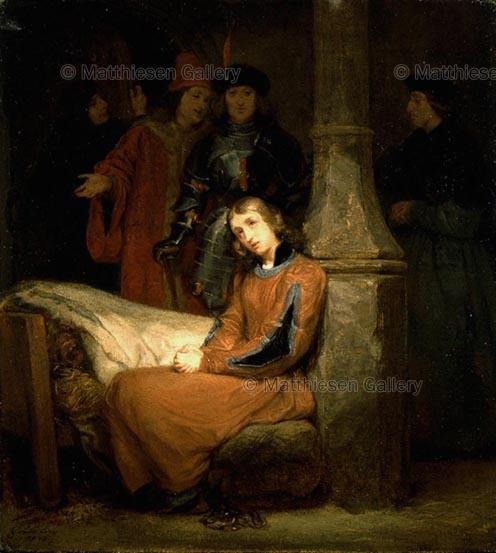
Theory 3: This is step 1 in Cinder's redemption arc. Time to get back to that particular rabbit hole, this time with 100% more Stockholm syndrome. This one will have whole lot speculative canon, but I'll try to reinforce each point with Joan of Arc parallel.
Ok, how the hell does that work? Well first, we need to get back to that double timeline theory I linked at the beginning. To sum it up, timeline 1 goes from Joan's arrival at Chinon to her heresy trial, timeline 2 goes from Joan's childhood to her victory at Orleans. These 2 timelines overlap creating complete narrative (V5 is both Joan's Loire campaign and trip to Vaucouleurs, V8 is both siege of Paris and Joan's village being sacked, etc). I go into reasons why I use this method in that theory.
Anyways, last event I traced to 2nd timeline is Joan's village being sacked. She spends her time in city of Neufchateau before departing for Vaucoleurs to meet Robert de Baudricourt for the third time. Quick tl;dr, Cinder is Baudricourt in this timeline since both dynamic and timeline placements of her meetings with Jaune match Baudricourt's meetings with Joan. Both times, Baudricourt dissmisses Joan (first time borderline publically humiliating her), but third time he relents (motivated by his desperate circumstances and Joan's correct prediction of king losing key battle near Orleans) and sends her to king Charles' castle in Chinon. Sidenote, Cinder also plays the role of Charles VII in timeline 2 (backstories match, both have a crown that they cannot reach, both were raised by powerful queen dowager after running away from their home) which I don't feel is contradictory for the reasons I go more in my timeline theory. Additionally, Joan gained favor of two of Baudricourt's soldiers, Jean of Metz and Bertrand de Poulengy. This surprised Baudricourt considering both were notorious troublemakers. I translate those two into Emerald and Mercury in my timeline theory.
Cool, but what does this has to do with Joan's capture? Well, we overlay this portion of timeline 2 onto Compiegne portion of timeline 1 to get the full story.
First to get back to Compiegne: Burgundian duke Philipp broke the peace treaty with king Charles VII and attacked Compiegne. Joan went there with relatively small army and in some sources, against king's orders. She rallied out to fight Burgundians, holding well, but ultimately getting captured. Burgundians were unable to take Compiegne (or they did but it was quickly recaptured, I've seen both).
So full translation to RWBY would be: Cinder manages to outsmart Ruby and gets into position where it's likely she'll take Maiden power and Relic. Jaune shows up as the last line of defense, likely fighting her together side by side with Emerald and Mercury (I believe Mercury will be redeemed in Volume 10, partially due to Joan of Arc story). This can be interesting callback to either Cinder, Emerald and Mercury taking on Amber or Jaune confronting Cinder with Emerald and Mercury by her side like in Volume 5 (their roles now being reversed). Similar to Volume 5, Jaune will likely hit several sour spots for Cinder (this is reference to Joan telling Baudricourt her visions and them turning out to be true). They lose after putting up a good fight but buy enough time for others to reinforce and prevent Cinder from obtaining the Maiden power and Relic (or Cinder takes too much damage in the fight). Cinder makes spur of the moment desperate decision and captures Jaune while running away (this matches Compiegne, Jaune gets captured but enemy doesn't achieve their objective). Capture kind of works with timeline 2: if Cinder is both Baudricourt and King, then she is effectively sending Jaune to herself, that to me reads like capture.
Several of her comrades try to free Joan, but by the time they reach the place where she is held as prisoner, she is already moved to different castle. This can also happen in the show, breaking the trend of main cast successfully rescuing their captured friend from previous volumes. Jaune would then be taken to Salem with Cinder (who'll likely get punished for her failures) arguing she can exchange Jaune for location of Relic of Choice (maintaining the part of the story Joan is held for ransom). Similar to theory 2, I'd expect Jaune's capture to last at least one full volume.
Ok, that's cool and all, but what does this have to do with Cinder's redemption in any shape or form:
They are forced together for extended period of time. Additionally, there will be nobody else for them to interact with. Eventually, they'll have to interact in some shape or form. I would expect lot of initial setbacks considering Joan of Arc attempted to escape twice. But still, it would be pretty weird if they just grumbled at each other whole time and then go back to fighting. Come on man, they are foils that don't know they are foils, do something with that.
Neither can hurt each other. Jaune cannot hurt her since he is her prisoner, she cannot hurt him without risking the prospect of deal falling off (and as shown when threatened by Neo, Cinder considers her death plausible outcome if she screws up the Relic). That means Jaune can meaningfully verbally challenge Cinder without the risk of dying (hello Watts). This also wouldn't be reach to happen, considering he does similar thing in Volume 5. Basically, Cinder will be stuck with Jaune as voice of consciousness entire volume without being able to get rid off it.
This transitions relatively well into Indecisive King story. In that story, Widow (basically Jaune) spends time in King's castle before eventually confronting him over Relic of Choice. Joan of Arc similarly spends time in King's castle at Chinon. In both stories Jaune coded character spends time with Cinder coded character before eventually changing them for better.
As usual, I decided to make Cinder portion needlessly long and complicated. Anyways, what are your thoughts? Did I miss any plausible interpretations?
12 notes
·
View notes
Text
This looks really cool ngl

A fully illustrated study of the French armies that were inspired by Saint Jeanne d'Arc, reformed under King Charles VII and eventually victorious over England in the Hundred Years' War.
Saint Jeanne d'Arc remains a central figure in France's national legend, having ushered the country's flagging military forces into a period of extraordinary reform and revival that culminated – some 22 years after her death – in the French emerging triumphant from the Hundred Years' War. France's 1429 victory at Orléans, which was headed by Saint Jeanne, marked the first major setback to a long series of English successes and led directly to the coronation of King Charles VII, who would transform France's fortunes by making peace with Burgundy, gathering foreign allies and creating permanent armed forces under royal control.
In this engaging new study, French military historian Philippe Gaillard examines the events and individuals that brought about such a pivotal shift in the trajectory of medieval France. Combining detailed research with period illustrations, artefact photography and newly commissioned artwork plates, the author brings to life the story of Saint Jeanne d'Arc, the army she revitalized and the structural and tactical changes that carried King Charles VII and France to victory at Formigny and Castillon in the 1450s.
7 notes
·
View notes
Note
whats your favourite painting, made in the 17/18/early 1900s? personally i really like "la dame aux perles" by herman richir, "calypso" by jan styka, or "a silent shrine" by george sherwood hunter :)
hmm for 1700s really big fan of The Death of Marat by Jacques-Louis David
1800s i'm a big fan of Joan of Arc at the Coronation of Charles VII by Jean Auguste Dominique Ingres
and early 1900s I'm gonna go with Klimt's Apple Tree, I done in 1912
#these are ofc my answers just for today but tomorrow who can say??#asks#ARH talks#calypso is a gorgeous one !
7 notes
·
View notes
Text

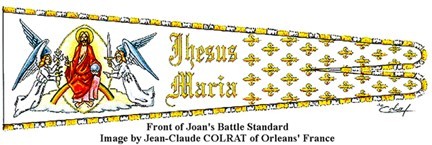

June 12th 1429 saw an army led by Joan of Arc defeat the English at the Battle of Jargeau.
I've posted about Joan of Arc and indeed the 100 year war before, the Scots were heavily involved with both the Maid of Orléans and the long conflict between France and England.
Joan had helped lift the Siege of Orléans the previous month, where Scots are known to have been present, Jargeau was a small town on the southern bank of the Loire river in central France, about ten miles east of Orléans., this was Joan's first offensive action during her short life.
While I can find no evidence that there were Scots at the battle, I would be surprised that there would have been none, they would however have been ordinary foot soldiers , certainly there were no Knights.
So what's the point of the post? Well just another wee connection with Scotland had with Jeanne d’Arc, as she is known in her native France, the banner she carried into battle was painted by a Scot called Hamish Power or Hauves Poulvoir as the French knew him. Joan asked Hamish to paint her her standard and pennon, to her designs, Power has been described as a displaced Scot, living in Tours.
The standard was 3 feet wide and 12 feet long. The image was a field of golden lilies with an image of "the King of Heaven seated upon a rainbow, and holding in one hand the world in the form of a globe, the other being raised in a gesture of benediction. Before Him, to right and to left, were the kneeling figures of Michael and Gabriel, each presenting to Him a fleur-de-lys. Joan's motto "Jhesus-Maria was written in letters of gold on this rough material. " on the reverse was " an escutcheon: a field of azure charged with a silver dove holding in its beak a streamer with the words "De par le Roy di Ciel." The standard was the "fluttering sign" to which her army could rally when dispersed in confusion of battle.
The Pennon depicted the Annunciation, the Virgin Mary receiving from the Archangel Gabriel a double lily, which was the twofold symbol of France and of chastity. It was carried by one of her squires to mark her position in the field.
Joan spoke about the banners at her trial, testifying that it had been created by the command of God and that she was given instructions about the design by Saint Catherine and Saint Margaret who told her to take it and bear it boldly.
When Joan and the dauphin rode to the Reims Cathedral for the coronation on July 17, 1429, she rode with a Scots Guard of 60 men.
She later stated that she preferred to carry her banner into battle so that she would not have to kill anyone. "I loved my banner forty times better than my sword. And when I went against my enemy, I carried my banner myself, lest I kill any. I have never killed anyone."
Joan carried her banner at the coronation of Charles VII in the Cathedral of Reims and was later questioned at her trial about having it there to which she responded: "It had borne the burden; it was quite right that it receive the honour."
You can find more about the remarkable lady that Joan of Arc was at this great site below, the klink takes you to part of her testimony when she was found guilty of witchcraft and heresy by pro-English bishop Pierre Cauchon, who sentenced her to be burnt at the stake. She died on 30th May 1431 aged just 19.
21 notes
·
View notes
Text
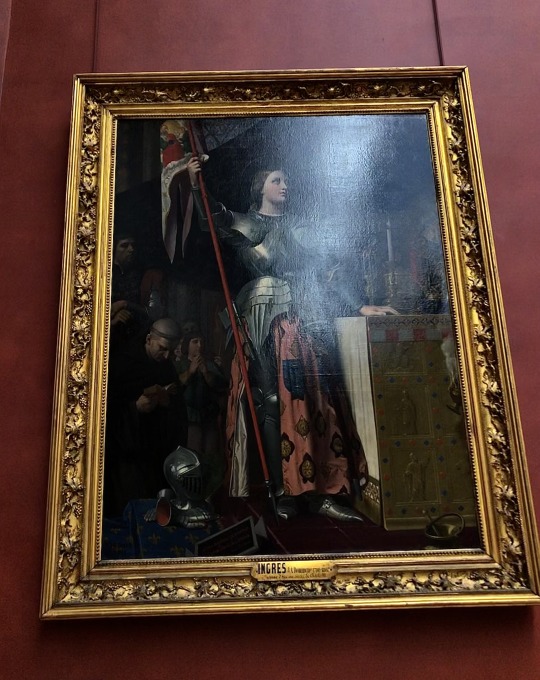
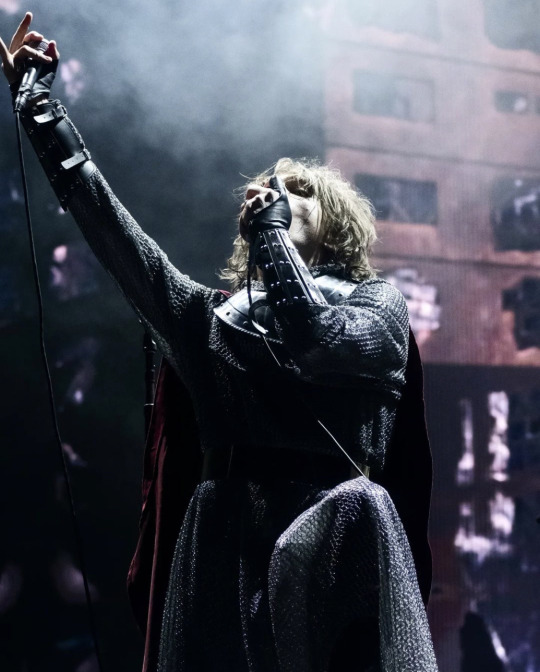
joan of arc at the coronation of charles vii // gerard way at mcr mexico
#photo credits of joan to me !!!! i took at oicture !!!!! in paris !!!!!!!!! so glad i took a picture of her back in september so i could#make this mcr post later#gerard pic credits to the insta acc i linked#toad talks#mcr#my chemical romance#gerard way#mcr mexico#st gerard#gerard of arc#ids in alt text
72 notes
·
View notes
Note
thoughts on the costuming in rings of power?
HELLO hello I've got a lot of thoughts all over the place and they are below the cut
I wanna start with some caveats re: me and rings of power
-I am a professional costumer and I've worked with people in film/streaming/tv/etc and professionals in/out of the union but my main work is in live theater
-I am a Big Old Tolkien Nerd but have only read the Silmarillion a few times and not recently
-I am 100% on team

I am so far on Team No Hate Watching that I called up my Tolkien friends back in 2020 to debate whether we'd watch anything Amazon made for the LotR-universe and unanimously decided we wouldn't trust the universe with Amazon
so that being said, everything I've seen of Rings of Power is from the trailer and screen caps on tumblr/facebook
ALSO when I refer to the Lord of the Rings movies, I am referring to the Peter Jackson movies because I do not have the time to compare every adaption
So what I’d like to start off with is the weird trend of like... romanticized Roman/Greek and Celtic-Briton influences

(^ Gil-galad- a Noldorin)
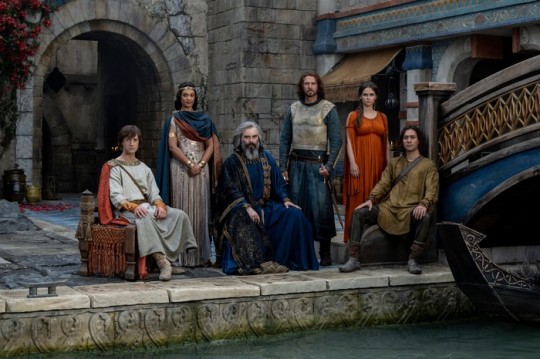
(^ Isildur and.... Numenoreans? idk didn’t watch)

(^ Sadoc Burrows, Harfoot Hobbit)
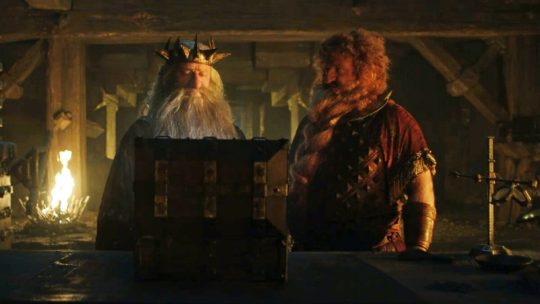
(^Durin IV of Durin’s Folk/Khazad-dûm)

(^Disa - didn’t watch, google just says she’s a dwarf)
A lot of these costumes are distinctly referencing what we think of as classical Greek/Roman and Celtic-Briton clothes (note: “actual” clothes for Greeks, Romans, and Celtic-Britons were different- and I think it’s important to make the distinction between historical garb and the way it’s been stylized in the last 100 years).
Greek/Roman Influences: the stylized wreath crown, the way they’ve draped most of the cloths into chiton, peplos, himation, and chlamys, the broad swaths of unadorned/untextured fabrics
Celtic-Briton-ish-ish Influences: I’m feeling this in the dye palette they chose which yes I know isn’t super-duper location specific but these colors look very derived from woad, madder, weld, lichen, and gall nuts which have usually been available in the isles, tell me Durin’s crown doesn’t you of the Waterloo Bridge Helmet, the studded armor is kind of ahistorical but frequently dramatized for Celtic-Britons, here just pop around this article (Celtic Clothing: Bronze Age to the Sixth Century) and I think you’ll get what I mean
I guess that’s a choice to make it seem “earlier” than the other Tolkien movies we’ve seen lately, but carries across the different groups it seems too bland/similar across it all for me. Without getting too deep, these folx are from different ethnic groups/races and it’s kind of weird their clothes don’t seem more distanced from each other (they hail from Aman, Numenor, the Shire/Eriador, and Khazad-dûm/Misty Mountains).
But maybe more importantly I think it’s pretty weird they didn’t push the design more in an art nouveau/pre-raphaelite direction: considering that both of those design philosophies fit in much more neatly with Tolkien’s work and what he emphasized in his descriptions. Both lean more towards figures that are nestled in the natural world and emphasize the beauty of organic curves and a world a little more intense (especially in color) that ours is. Gil-Galad’s cloak does have a watery drape which is nice but the lines of his cross belt, color palette, and the brooches overwhelmingly read more imperial Roman than Tolkien character.

All of this makes Galadrial’s armor so much more... dissonant with the rest of the costuming. Her cuirass/mail combo reads so much more aggressively modern than the rest of it- even more modern than the armor of Lord of the Rings (which, admittedly had similar plate/mail combos but leaned more into a faux-medieval stylization). Also, to be nit picky, I think the lack of a gorget (neck piece) in field armor looks weird :S
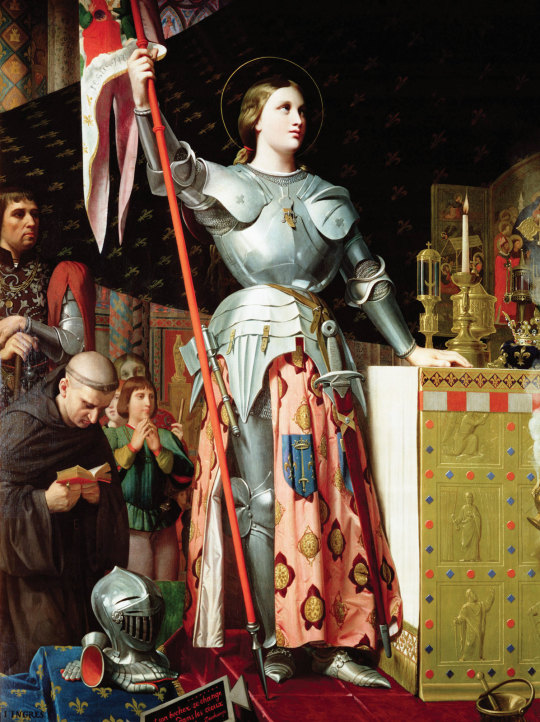
I tried to find a better example to illustrate my point but here’s Ingres’ Joan of Arc at the Coronation of Charles VII which is an 1854 depiction of an event that took place in 1429 and presents a very modern adaption of armor. NGL my mind keeps filling the spot on Galadrial’s plate with the sacred heart- her armor reads as such a Catholic-virginal-femme-knight vibe which is very much at odds with the overly classical costumes for the rest of the characters.
I do think her armor is cool looking but it doesn’t feel like it exists in the world of Rings of Power nor does it really fit in with the Lord of the Rings movies... The closest I could think of offhand is Aragorn/Elessar’s armor for the coronation in Return of the King and even that reads as “older” or more grounded in the film-world than Galadrial’s.
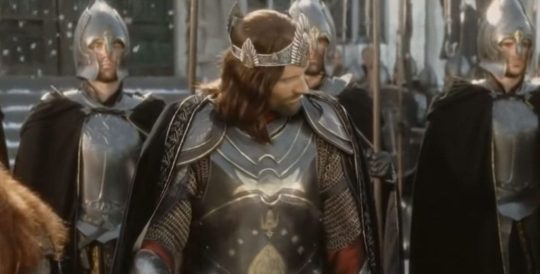
.
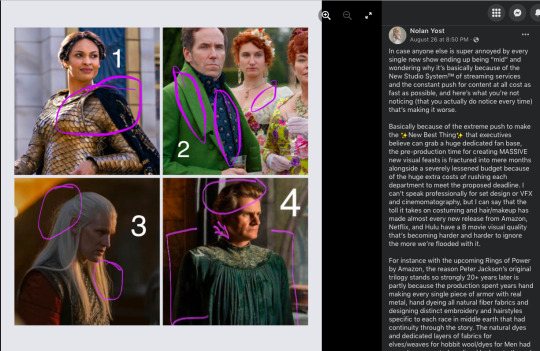
I’ve seen a lot of comments on the costume quality in costuming groups so I’ve linked the above post here [it’s a public post so you don’t need a facebook account to view it] which covers a lot of it but I’ll have my own rant too.
There’s for sure a decrease in the quality of costumes from the Lord of the Rings movies which is... so disappointing and TBH expected from the most expensive tv show ever in 2022 and from Amazon. I think a lot of people are aware of the aggressive shift towards using CGI for messing around with costumes: it takes TIME and MONEY and SKILL to produce the wonderful costumes we saw in Lord of the Rings and, to be frank, the work of many many costume/IATSE union members which Amazon isn’t going to pay for. The overall time frame for producing tv/movies has gotten a lot shorter which has forced a lot of costuming departments to cut corners in design and execution.
That is how rumpled costumes make it on the screen, that is how you get so many wigs that move unnaturally, that is how the most expensive tv show ever gets such a... bland and milquetoast design. The Lord of the Rings costumes were littered with so many small and very intentional details that brought more personality to the characters and made the world seem more grounded and real.
HOWEVER- I would like to make a note on Miriel’s screen printed undershirt.

I’ve been making clothes a long time, I’ve seen a fair amount of all levels of live theater, I’ve gone to fashion exhibitions, and seen a lot of movies. What I mean to say, is that I’ve seen a lot of art involving clothes/costuming with big and small budgets and many different intentions. Over the last few years, I’ve seen the expectations for local theater and bespoke clothing rise dramatically while keeping the pay low and rushing for time- I think a lot of people are so disconnected from the process of making clothes that it’s been hard to temper your expectations away from what a big budget movie house is able to do.
I 100% Absolutely Think that Rings Of Power SHOULD have done so much better!!! They literally had so much money they could have invested in costume professionals and materials and taken their time to let a nuanced and well-made wardrobe emerge.
But! I would like to take a moment to admire Miriel’s screen printed undershirt. I’ve seen a lot of people bash it without nuance. It’s not an appropriate solution for literally the most expensive tv show ever- but can you imagine what a clever idea this is if you were putting on a dance performance and needed a full range of movement? Or if you’re staging a production of Cinderella and bought a plastic breastplate and your producer (OhFuckOhFuckOhFuck) only budgeted $100 for a character that’s supposed to be fully armored?
Costume designers and shop workers are overwhelmingly paid less than their peers in other departments (maybe it’s because many of them are from marginalized genders.....) and frequently given a smaller budget than other departments in live theater. I recently had a friend of a friend reach out to me about a musical where they budgeted $300 for 20 full costumes!!! That’s $15 a costume from a professional theater!!!
I absolutely adore the tremendous growth in cosplay we’ve seen over the past decade and the cool costumes we’ve seen from high-budget period and fantasy shows: but a lot of your “run-of-the-mill” costume designers have been run ragged trying to meet the expectations of Hollywood movies on a shoestring budget and it’s been disheartening to see a lot of these kinds of practical solutions bashed online. There was and should have remained a distinction between the quality expectations of big budget films or the passion projects of a cosplayer VERSUS what the majority of professionals do within their budget.
I’ve heard more than a few of my fellow designers and technicians cry because a costume looked GREAT with the distance from stage to audience or properly lit- but was bashed from a close up photo or because the director didn’t like that the “illusion”/solution only worked on stage. I’ve seen catty arguments online where a costumer is trying to build their own platform shoes (VERY VERY DANGEROUS unless you’re a professional cobbler) because the show was usually done with them, their director insisted on them, and they didn’t have the resources to purchase new/used. Fuck I’ve worked rentals with people from a few of these actual high budget houses- trying to stretch a budget until it screams.
There’s a whole complicated discourse on fair wages and labor practices and budgeting that I’m not ready to get into- but I’d like to ask you to think of kindness and the suspension of disbelief. It doesn’t solve the structural problems that need to change, but a lot of professional costumers love their art/craft and are proud of the solutions they come up with in their line of work! Obviously we should expect better quality in examples like these- but I’d like to celebrate some of the costumes that are less “realistic” or “immersive” but do such a good job of conveying their part of the narrative that we overlook the proverbial screen-printed undershirt.
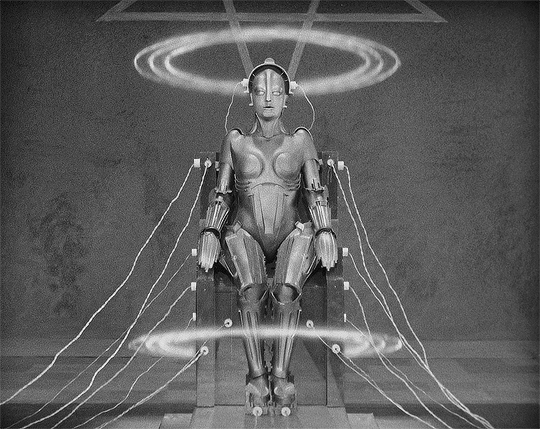
(Hel, Metropolis- needs no comment I love her)

(Monty Python and the Holy Grail- knitted chainmail)

(Jareth, The Labyrinth- one CRUNCHY wig)
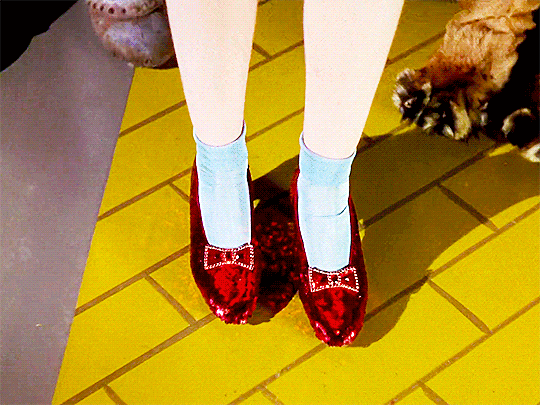

(Dorothy, The Wizard of Oz- ruby slippers made with dyed satin and organza, three different kind of glass and plastic beads/sequins, and lit exceptionally well)
.
I’m not the expert on all of this and I’d love to hear other people’s thoughts (please be kind and act in good faith)! I’m not about to say great things about the Amazon costumes for Rings of Power, but I hope that you’ll be more forgiving online for other designers making the best of their time/budget
Love, your local costume professional

#hello hello#kaasknot#this ended up being way more scattered than i thought it would be#but here's my rant#rings of power#lord of the rings#lotr#tolkien fandom#costuming#costumes
109 notes
·
View notes
Text
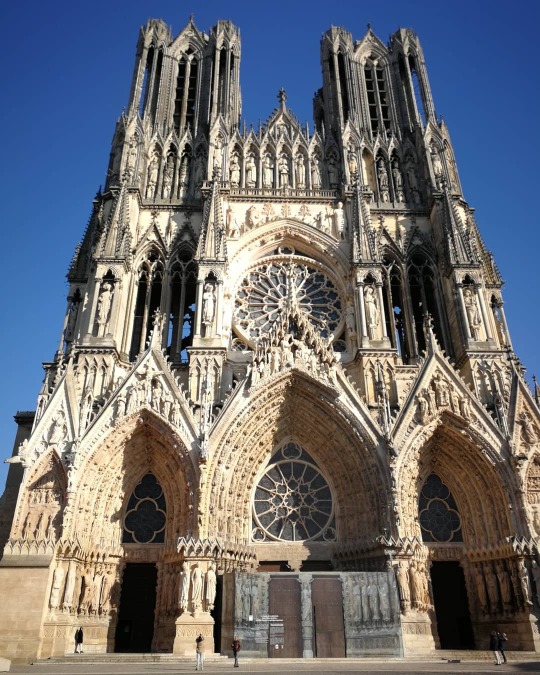
Guess where 😎
Yeah, welcome to #gorgeous #gothic ⛪ of Reims 🌞
.
#cathedral Notre Dame de Reims was built in XIII-XVcenturies & was dedicated to the Virgin Mary & is #famous for being the traditional location for the 🤴🏻 coronation of the kings of France
.
🧐 During the 💯 Years War the cathedral and #city were under siege by the #english from 1359 to 1360, but the siege failed
.
📜 In 1380, Reims cathedral was the location of Charles VI's coronation and 8 years later Charles called a council at Reims in 1388 to take personal rule from the control of his uncles
.
👨🏫 After Henry V, King of England, defeated Charles VI's army at Agincourt, Reims along with most of northern France fell to the English
.
💂♂️The English held Reims & the Cathedral until 1429 when it was liberated by (my favourite😇) Joan of Arc which allowed the (pettiness) Dauphin Charles VII to be crowned king on 17 July 1429...
.
.
.
.
.
.
.
.
#travellingthroughtheworld #travelling #architecture #travelstory #travelhistory #travelblog #travelblogger #beautyblog #beautyblogger #france #francetravel #parisien #reims #reimscathedral #travelsmart #europe #trip #placetovisit #weekend #saturday #champagne #instago #wanderlust #church | by desogrin
3 notes
·
View notes
Note
How did Zephyr ends up learning of the Folk Gods? Did Sparrow tell her? How did she end up respecting them?
oh, i talked about sorta that in discord dms recently! herest the thing
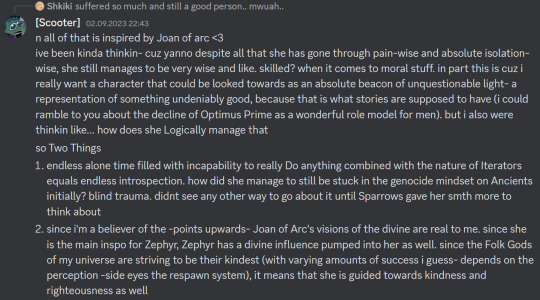
Joan of Arc said to have been visited by the archangel Michael, who ultimately sent her on the path that ended in liberation of France and end of the hundred years' war. then she said she was guided by the divine the whole way until the coronation of Charles VII
that, her becoming a military leader at a young age n scoring meaningful victories, plus this

are the most important things that i've taken inspiration from Joan for Zephyr
Zephyr is guided by the Folk Gods, in a way. one could say they lend her their widsom, teach her, when she finds the time to rest, sleep and dream. she doesn't really understand what and who she's seeing, but with things like this one doesn't need the conscious physical mind to be able to like... identify. realize. like she would if Gourmand would've shown up in her structure. it's a spirit (or amalgamation of spirits) recognizing one of its parents and teachers that would be happening there
gjldskmcl fucking
the Folk Gods, in her dreams: And this is why kindness is the most important thing to carry, along with bravery. you need to be thoughtful, judge righteously and then deliver the consequence, no matter the manner, no matter the fear
Zephyr: Got it. this means kill all masked ones. I Got It. Loud And Clear
the Folk Gods: wait n-
Zephyr: Mass Murder.
the Folk Gods: wuh oh
#spot says stuff#rw#oc tag#i aint christian though dont poke with that kush at me hell nah!!!#that thangs Corrupted to hell n back#gjlkdsmlkmdsk believer writes RW stories what will happen 🤨🤔#zephyr is so fucking cool n she doesnt show up enough to show it </3 GJSDLKCMLKDSK -heavy sigh- this poor woman
9 notes
·
View notes
Text

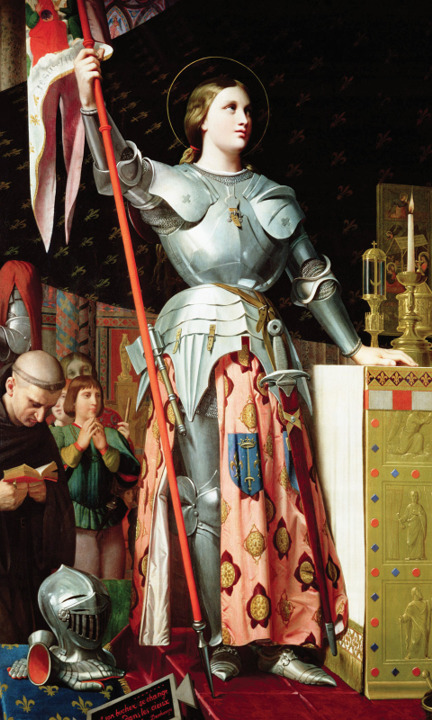
charles leclerc (zak mauger, 2019) // joan of arc at the coronation of charles vii (jean-auguste-dominique ingres, 1854)
(charles x art, 17/?)
#charles leclerc#f1#charles x art#jean auguste dominique ingres#pip.txt#joan of arc coded again...#cheanne d'arc
52 notes
·
View notes
Text

Title: Joan of Arc on Coronation of Charles VII in the Cathedral of Reims
Artist: Jean Auguste Dominique Ingres
Date: 1854
Style: Neoclassicism
Genre: History Painting
34 notes
·
View notes
Photo

Happy Feast Day
Saint Joan of Arc
1412-1431
Feast day: May 30
Patronage: France; martyrs; captives; military personnel; people ridiculed for their piety; prisoners; soldiers
St. Joan of Arc, national heroine of France, was born in 1412 during the Hundred Years War. At age 12 she began receiving visions of Saint Michael, as well as other angels and saints, telling her to drive out the English. Possessing remarkable mental and physical courage, Joan led the French army to victory over the British at Orleans when she was 18. Several additional victories led to Charles VII’s coronation. Eventually burned at the stake, she held up a cross calling continually upon the name of Jesus. A retrial declared her innocent in 1456 making her a martyr. Joan of Arc was canonized 500 years later.
{website}
147 notes
·
View notes